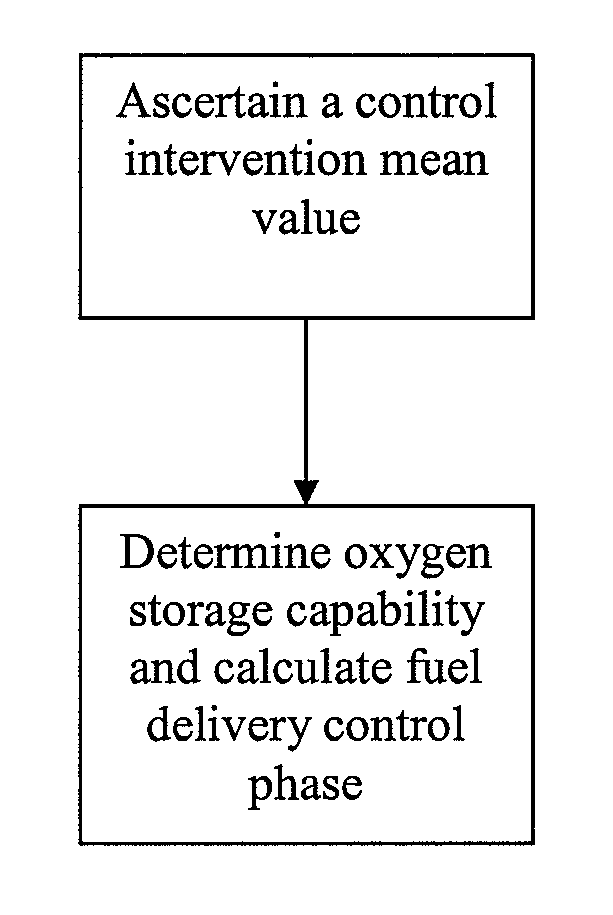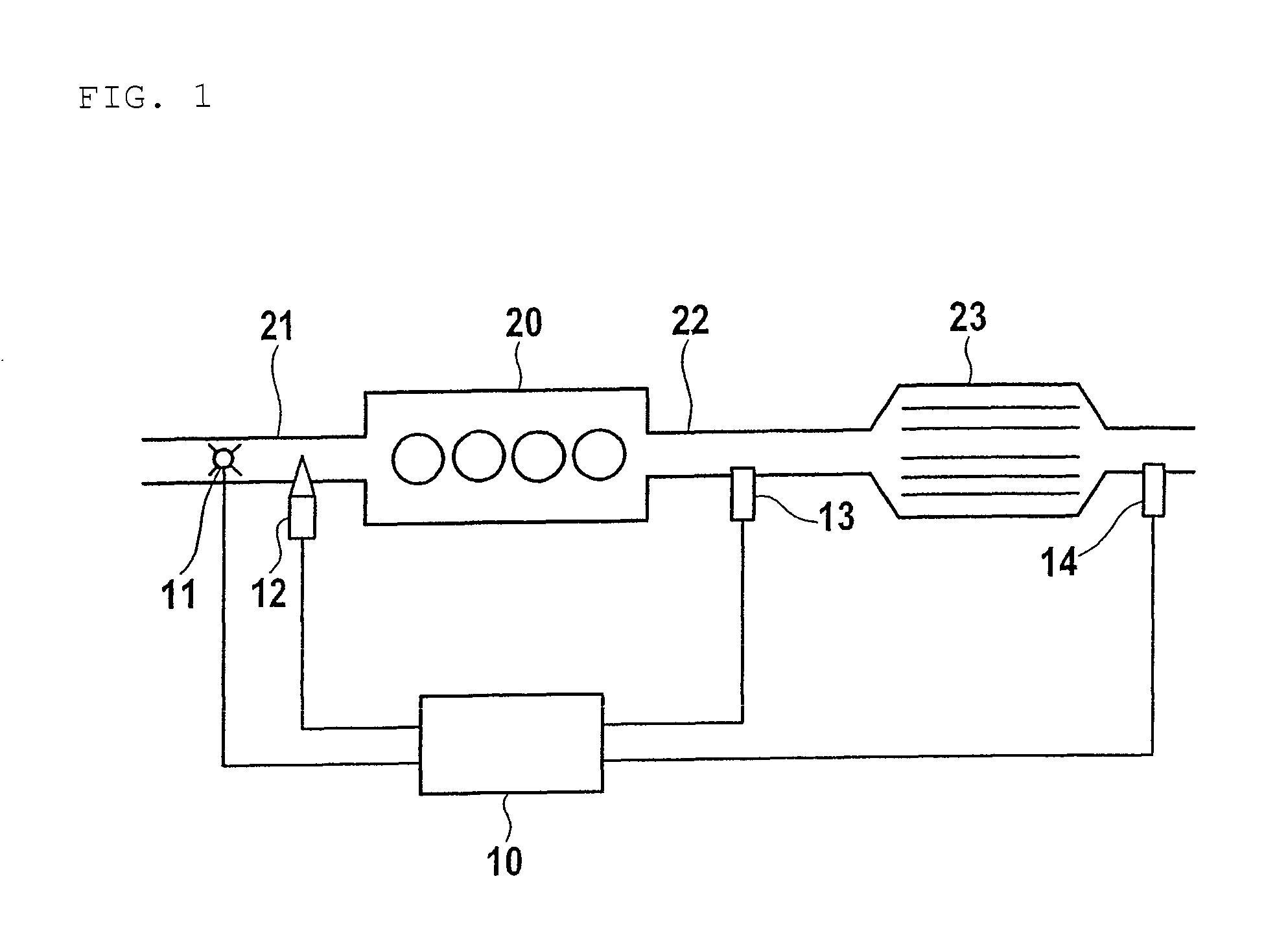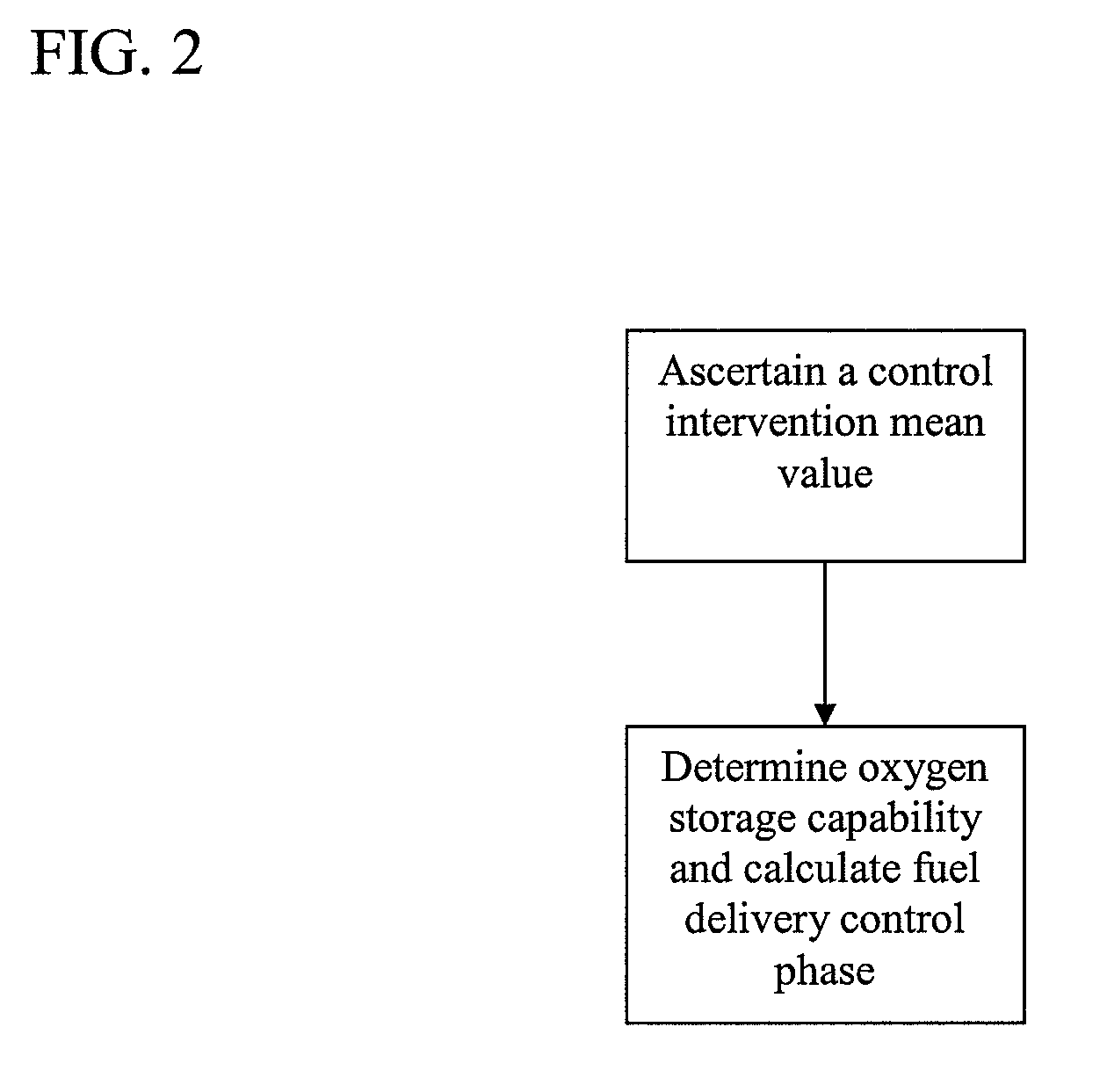Procedure to measure the oxygen storage capability of an emission control system
- Summary
- Abstract
- Description
- Claims
- Application Information
AI Technical Summary
Benefits of technology
Problems solved by technology
Method used
Image
Examples
Embodiment Construction
[0029]FIG. 1 shows an internal combustion engine 20, which is controlled by an engine management system 10 and whose exhaust gas is cleaned with an emission control system 23. The internal combustion engine 20 is supplied by way of a delivery air channel 21 with combustion air, whose mass is determined with an air mass gauge 11. The measured air mass is forwarded to the engine management system 10 for the calculation of a fuel amount to be injected. In order to generate the fuel-mixture, the fuel-delivery control phase specified by the engine management system is conducted in the delivery air channel 21 by means of an injection jet 12. Provision is made for an exhaust gas sensor 13 in an exhaust gas tract 22 behind the internal combustion engine 20. With the help of the exhaust gas sensor 13, the engine management system 10 can adjust a lambda value, which is suitable for the subsequent emission control system 23 for achieving an optimal cleaning effect. This exhaust gas sensor 13 i...
PUM
 Login to View More
Login to View More Abstract
Description
Claims
Application Information
 Login to View More
Login to View More - R&D
- Intellectual Property
- Life Sciences
- Materials
- Tech Scout
- Unparalleled Data Quality
- Higher Quality Content
- 60% Fewer Hallucinations
Browse by: Latest US Patents, China's latest patents, Technical Efficacy Thesaurus, Application Domain, Technology Topic, Popular Technical Reports.
© 2025 PatSnap. All rights reserved.Legal|Privacy policy|Modern Slavery Act Transparency Statement|Sitemap|About US| Contact US: help@patsnap.com



